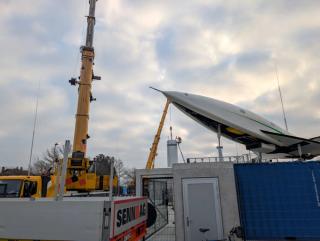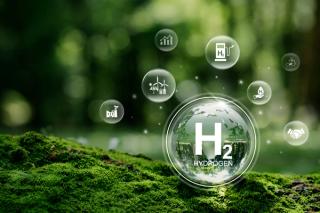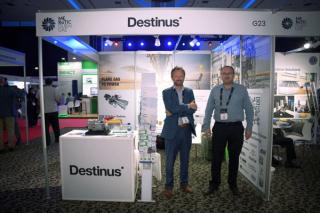[Munich, Germany] – May 24, 2023, marked a significant step in the Destinus journey with the successful flight of the Jungfrau (Destinus-1) prototype equipped with a hydrogen-fueled afterburner.
Since its maiden flight in 2021, Jungfrau (Destinus-1) has undergone significant developments, with this latest flight campaign including a groundbreaking application of hydrogen. This historic flight took place last Wednesday at an airport near Munich, Germany, and marks a huge step forward in the development of advanced hydrogen-powered propulsion systems for supersonic flight.
The experimental flight involved an unmanned prototype with a special hypersonic aero shape design. Several flights were conducted with multiple firings of the hydrogen afterburner, reaching speeds of approximately 250 kilometers per hour. These flights demonstrated the functionality and efficiency of hydrogen afterburners under real-world conditions.
The afterburner was designed in-house, produced with additive manufacturing and ground tested at our propulsion test site in Payerne, Switzerland. An afterburner is an additional combustion component used on a turbojet engine for generating more thrust by injecting additional fuel, in this case hydrogen, into the turbine exhaust stream. The increased thrust generated by afterburners enables aircraft to achieve higher speeds and climb rates. Afterburners can provide the necessary power to achieve supersonic speeds. In addition, this configuration enables the use of two fuels in the same propulsion system, speeding up the platform development.
The use of hydrogen as a fuel source represents a significant advancement in sustainable aviation. Hydrogen is the key enabler of long-range and high-speed flights, with a much higher energy density compared to Jet A fuel. Additionally, hydrogen is known for its clean-burning properties, emitting only heat and water vapor as a byproduct, thereby minimizing carbon dioxide emissions. In addition, it has an energy density three times that of Jet A fuel, making it suitable for long ranges and high speeds. The successful integration of hydrogen afterburners in this prototype paves the way for a new era of cleaner and more efficient propulsion systems for aviation.
“This achievement represents a major leap forward in aerospace technology,” said Mikhail Kokorich, Founder and CEO. “The successful flight with hydrogen afterburners demonstrates the potential for future high-performance propulsion systems that are highly efficient and reduce carbon emissions, as a part of Destinus’ ambition to develop hypersonic aircraft powered by hydrogen.”
This breakthrough technology positions us at the forefront of aerospace innovation. The next prototype, Destinus-3, is underway and will be the world’s first supersonic prototype powered by hydrogen. This record will be set in 2024. Funded in part by European grants secured through the Spanish government, Destinus-3 will be unveiled alongside Jungfrau (Destinus-1) and Eiger (Destinus-2) at the Paris Airshow in June.
We aim to develop a hydrogen-powered hypersonic passenger aircraft to maintain Europe’s leadership in aeronautics. As the aviation industry continues to strive for greener solutions, the successful demonstration of hydrogen afterburners in the Jungfrau (Destinus-1) prototype is a significant achievement. The design of the afterburner has significant similarities to the combustion chamber of a ramjet, so the hydrogen afterburner test also serves as a stepping stone for the development of a hydrogen ramjet.






